Remembering Alexandros Tombazis (1939-2024), and the Metabolist architecture of this 1970s eco-pioneer
Greek architect Alexandros Tombazis has died, leaving a legacy of pioneering projects; back in September 2010 (W*138), we explored his work and history, and now we revisit the profile in honour of his memory
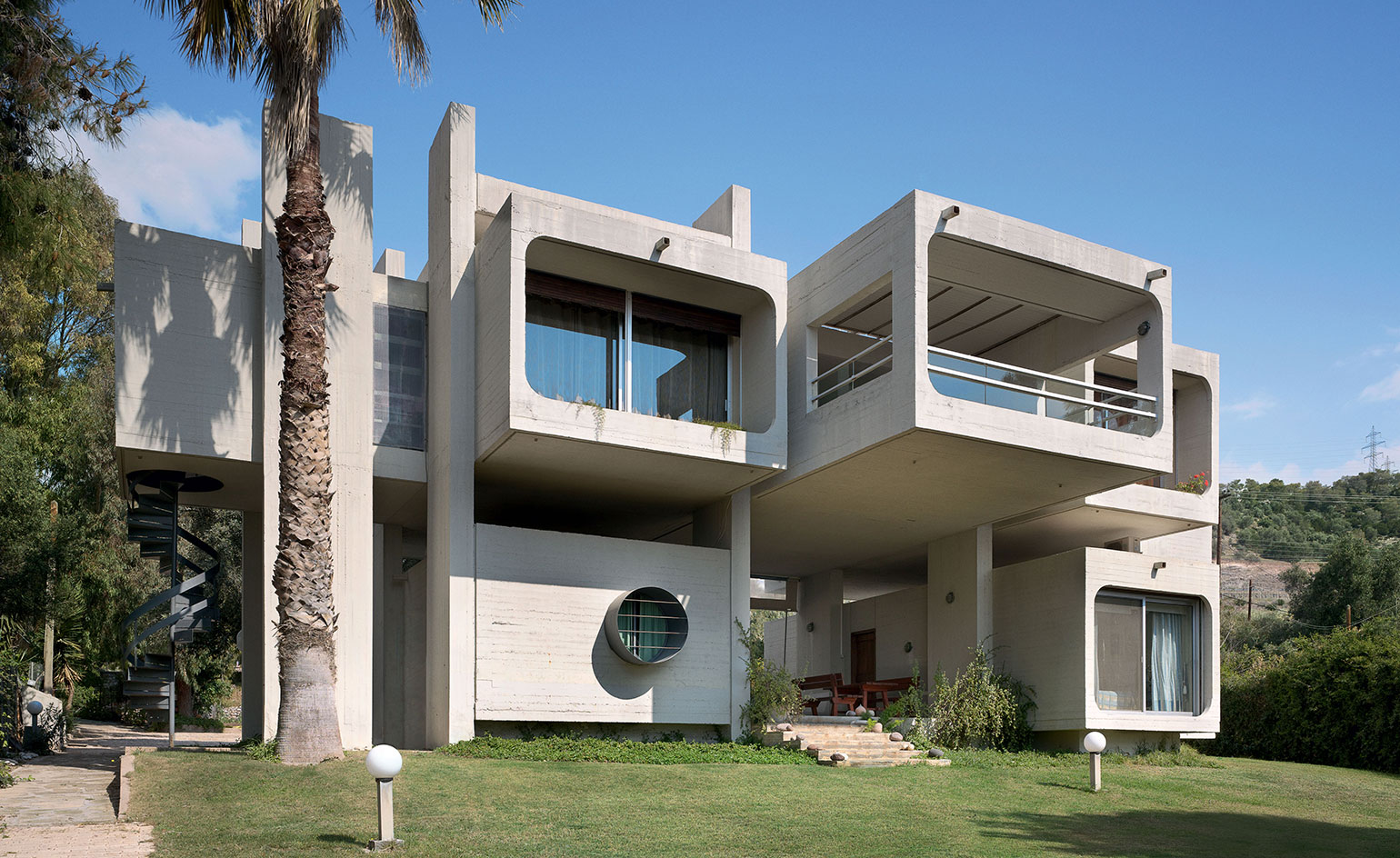
Alexandros Tombazis heads a 60-strong office in Athens and leads about 20 realised and conceptual projects per year. With more than 800 projects under his belt – about 300 of them built – and at least 110 prizes gained in competitions, Tombazis is one of Greece’s most prominent and successful living architects, appreciated more by his peers, perhaps, than by the public.
Born in India in 1939, he spent his childhood in Karachi, Tunbridge Wells and London before his family settled in Athens. At the Architectural School of the National Technical University of Athens, he was taught by key figures of the Greek art and design scene – including Nikos Hatzikiriakos-Gikas and surrealist Nikos Engonopoulos – during the late 1950s and early 1960s. Coinciding with the peak of Greek modernist architecture, it was an exciting time. As a student, Tombazis witnessed the global rise of the International Style, and travelled all over Europe visiting innovative buildings such as Le Corbusier and Iannis Xenakis’ Philips Pavilion, a multimedia showcase, at Brussels’ 1958 World Fair. From this inspirational start, he developed a dedication that has fuelled his tireless productivity, along with a sense of optimism and a belief in the power of technology in architecture
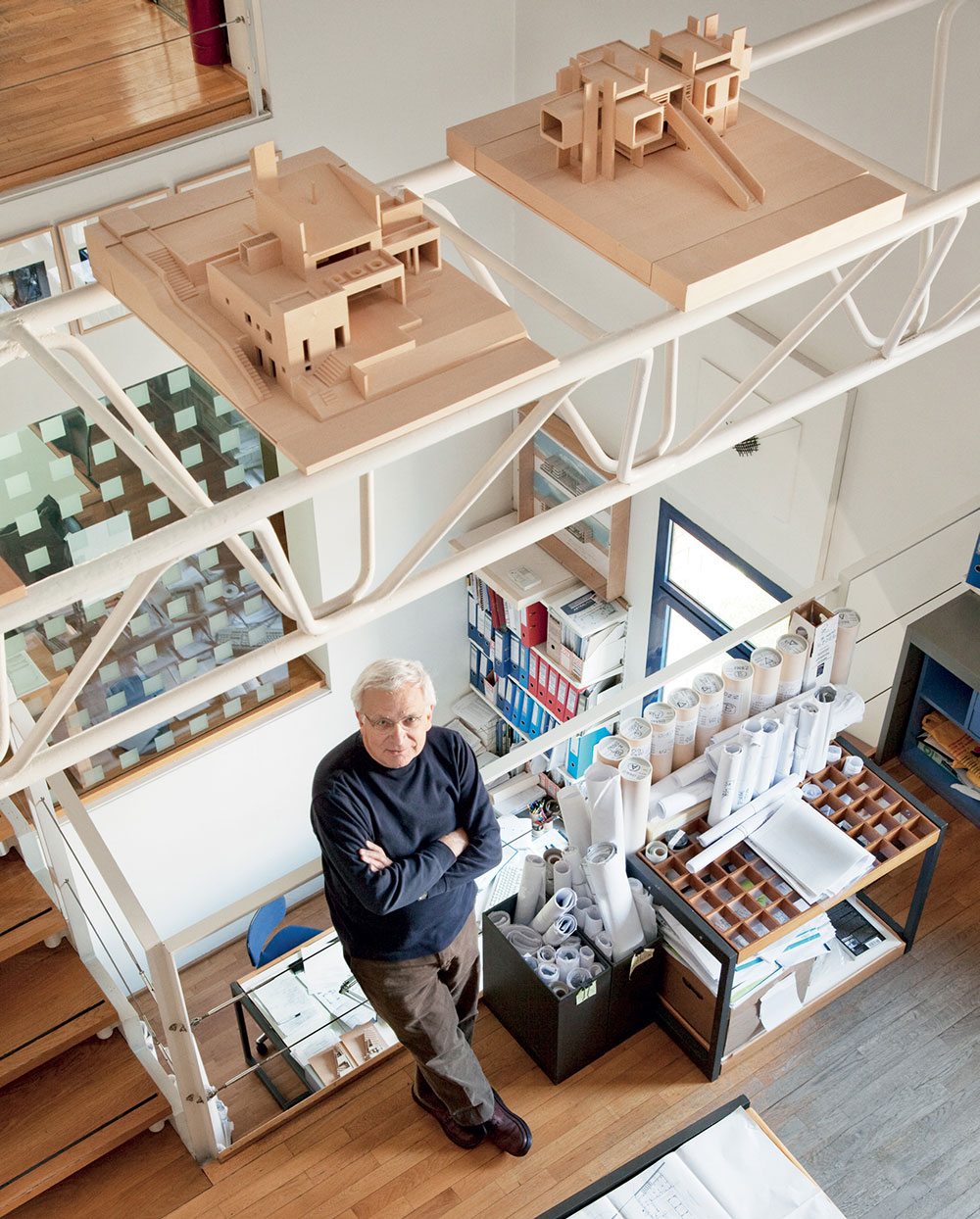
Tombazis in his Athens studio in 2010. Pictured are models of Helios 4 (left), the Peloponnese retreat he designed for his daughter, and the Kineta house (right).
He set up his own practice in Athens in 1963, while also beginning a three-year stint as a research assistant to Kostantinos Doxiadis, an architect known for his master plan for Islamabad. Tombazis’ interest in the architectural avant-garde surfaced immediately, channelled through a fascination with the Japanese Metabolist movement (which focused on adaptable, large scale housing projects and produced works such as Kisho Kurokawa’s Nakagin Capsule Tower in Ginza, Tokyo, and Kenzo Tange’s vision for a new master plan of the city).
When an open-minded client, whose Athens residence Tombazis had already designed, asked for a holiday house, the architect grasped the opportunity to put his ideas into action. Translating his Metabolist influences into a small-scale residential project, he started work on the house in the seaside village of Kineta in 1968. Revolutionary for its time and place, the house is an exposed concrete composition of closed and open boxes. A twist in its construction is elegantly thin yet perfectly insulated walls – achieved with the then-innovative use of recycled residue from the nearby Elefsina steel industry’s blast furnaces, which provides excellent yet cost-effective insulation. An extra ground floor pod was added as a later extension, against Tombazis’ wishes. ‘It is a pity,’ he reflects, ‘but on the other hand, for how long can an architect have a say for somebody else’s use?’
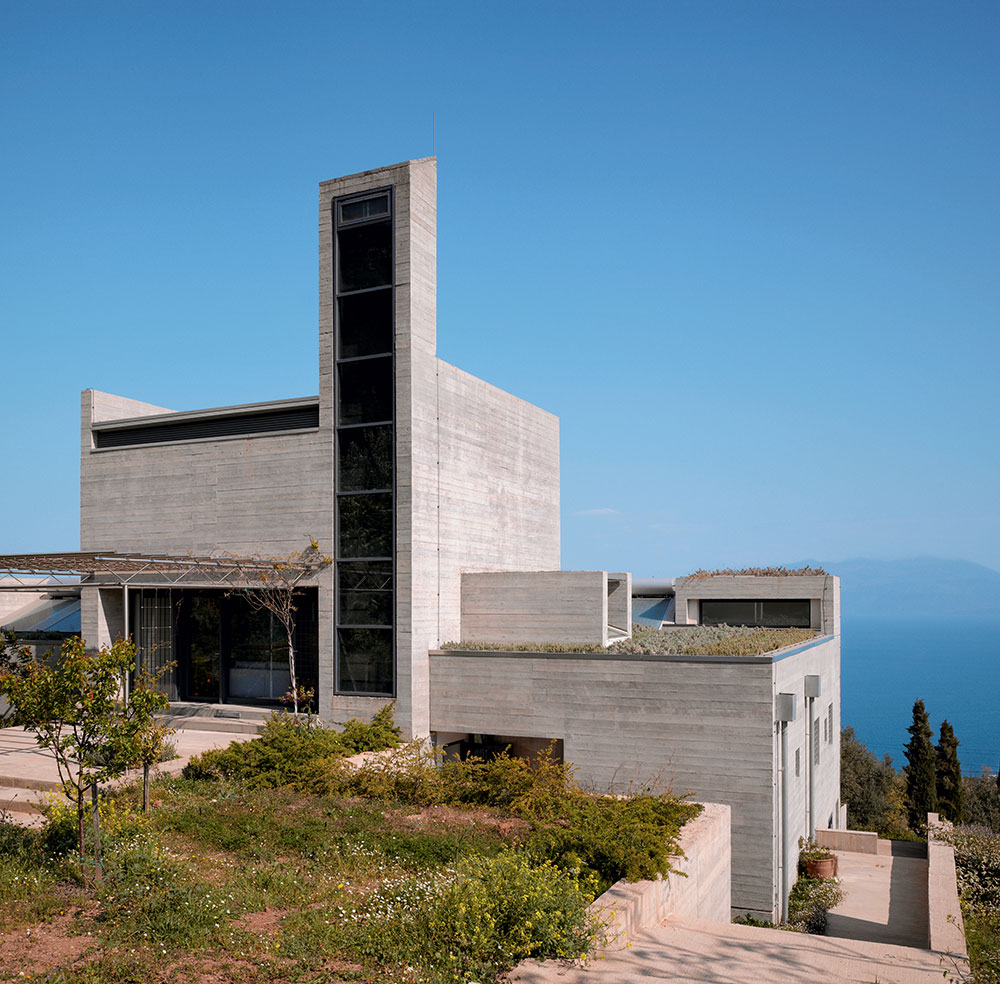
Helios 4, with its green roofs. As well as serving as a regular vent for the fireplace, the chimney also offers environmentally friendly air conditioning. In winter, the sun heats the air between its glass frontage and the black panels behind. This rises and enters the house through various openings. In summer, warm air is allowed to escape via a window at the top, while cool night air can also be drawn in and circulated.
Tombazis’ Dhifros apartment block in north Athens, with its towering, stacked volumes, and the series of concrete boxes that form a cement company office in the capital’s Lykovrisi suburb, both designed in 1971 and completed in 1975, are key projects from the same period. And like the Kineta residence, they feature bare concrete volumes and compositions of smaller individual units.
It was the oil crisis in 1973 – turning energy efficiency and sustainability into hot issues – that marked a significant change in Tombazis’ work. Already a follower of technological advances in the field (perhaps still influenced by the technologically-minded Metabolists), he became one of the first architects, in Greece and internationally, to embrace bioclimatic design. ‘Beyond the practical advances and the fact that it is a necessity for the salvation of the planet, one of the most beautiful elements of the bioclimatic approach is that it does not dictate a specific type of design,’ says Tombazis. ‘It is a platform, a way of thinking where one can learn and adapt.’
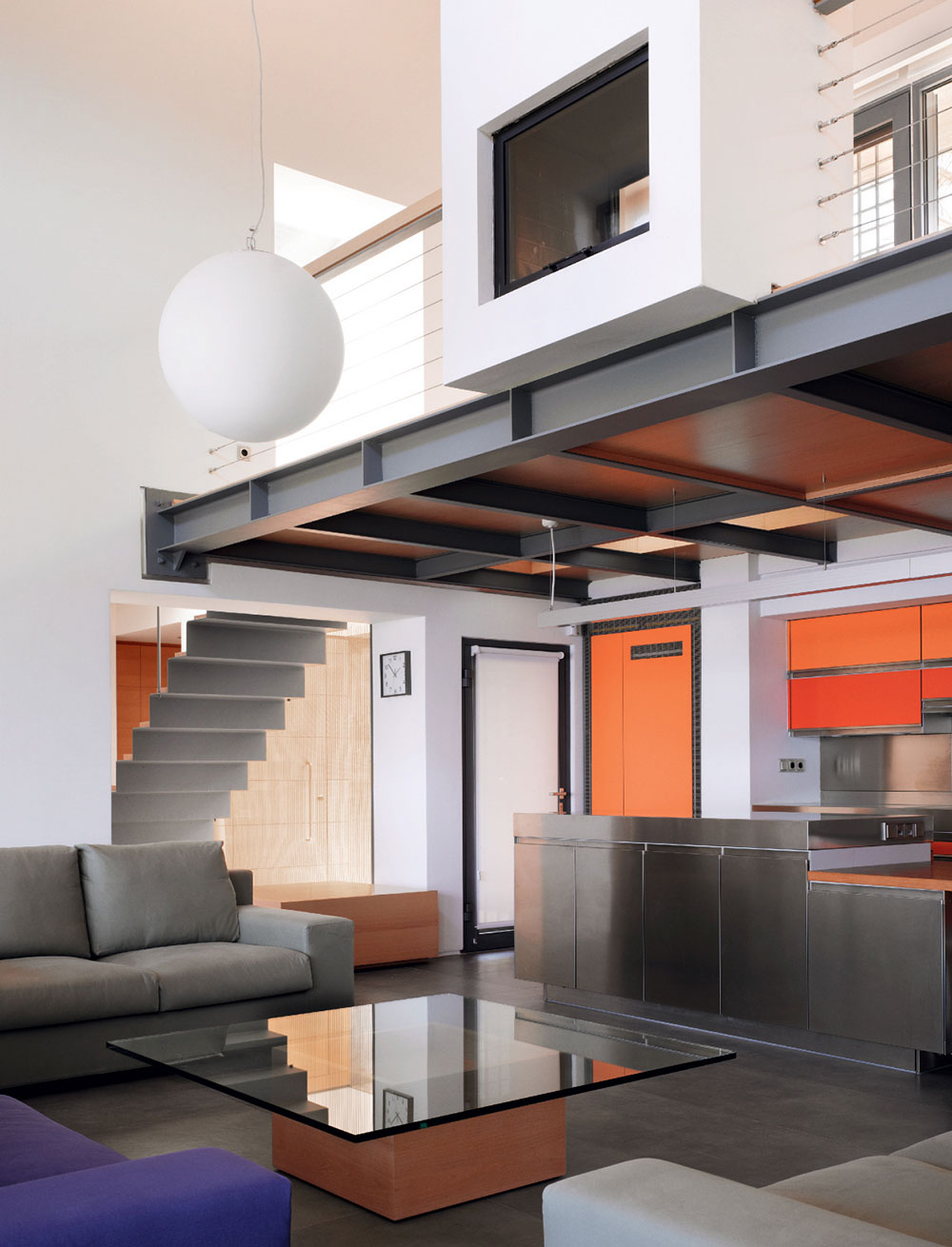
The fireplace.
The first project designed using his newfound philosophy was Helios 1, his own holiday house in the Peloponnese. It was also the first house in Greece to use active solar technology. Set on a steep slope, the L-shaped house, with an open plan kitchen, living and dining area, and children’s bedroom accessible by a set of playful wooden ladders, was designed around the north-facing sea views. The brick structure, half set into the slope, has a wooden frame and partial lead cladding. The materials were chosen for their easy maintenance, while the pine interior creates a homely feel.
Another example of Tombazis’ harnessing of alternative energy is his Lykovrisi Solar Village housing scheme from the late 1970s, featuring 435 low-cost apartments heated and supplied with hot water from a creative combination of active and passive solar technologies
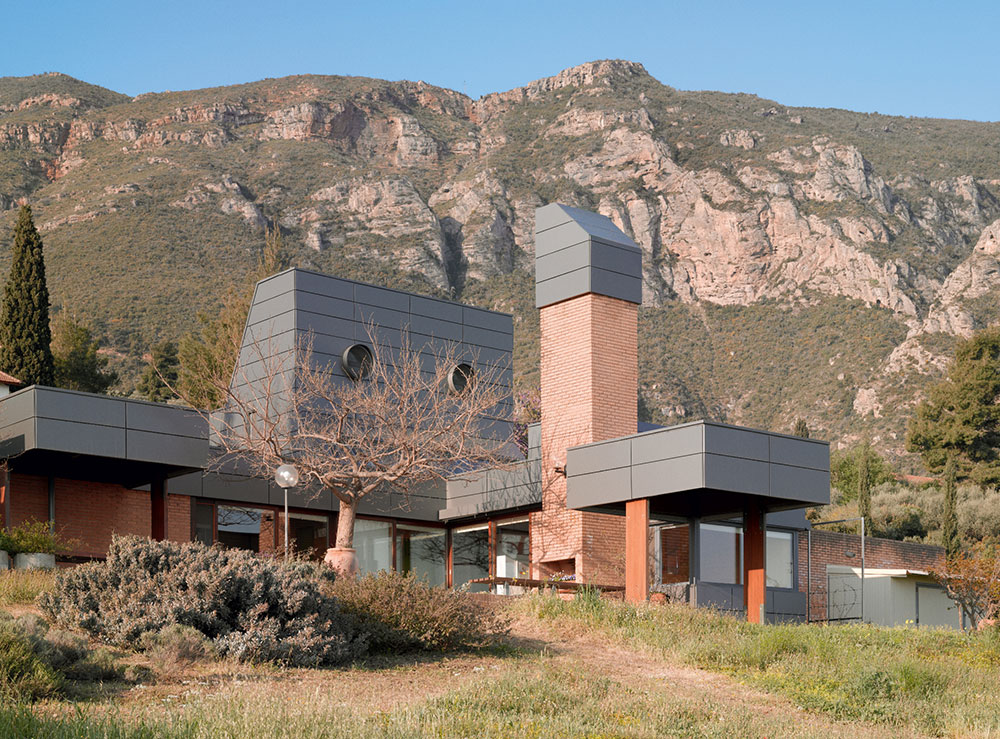
The brick and lead-clad Helios 1, Tombazis’ own, 1970s Peloponnese retreat, was the first house in Greece to use active solar technology
More recently, on his Peloponnese plot, he built a second, larger house, Helios 4, for his daughter’s family. Although it adheres to similar eco-friendly principles to the first – featuring solar panels and a solar chimney that forms part of a natural air circulation system – it follows a markedly different aesthetic. The exposed concrete, geometric composition is dominated by cascading planted roofs. An advocate of a bespoke, site-specific design approach, Tombazis explains: ‘I didn’t intend for the two houses to look alike. I don’t think an architect should design instantly recognisable projects. Every work needs to start from a blank page, even though from building to building there may be natural similarities. One always learns and transfers elements from one project to the next.’
While Tombazis’ enthusiasm for eco-design remains central to his work, its application has become seamlessly embedded in his work as his career developed. He maintains that such an approach is key to a sustainable urban future. However, this should not imply a specific stylistic approach. ‘Perhaps it is a matter of maturing as a practice. The more one matures, the more confident one feels about standing on one’s own feet,’ he says.
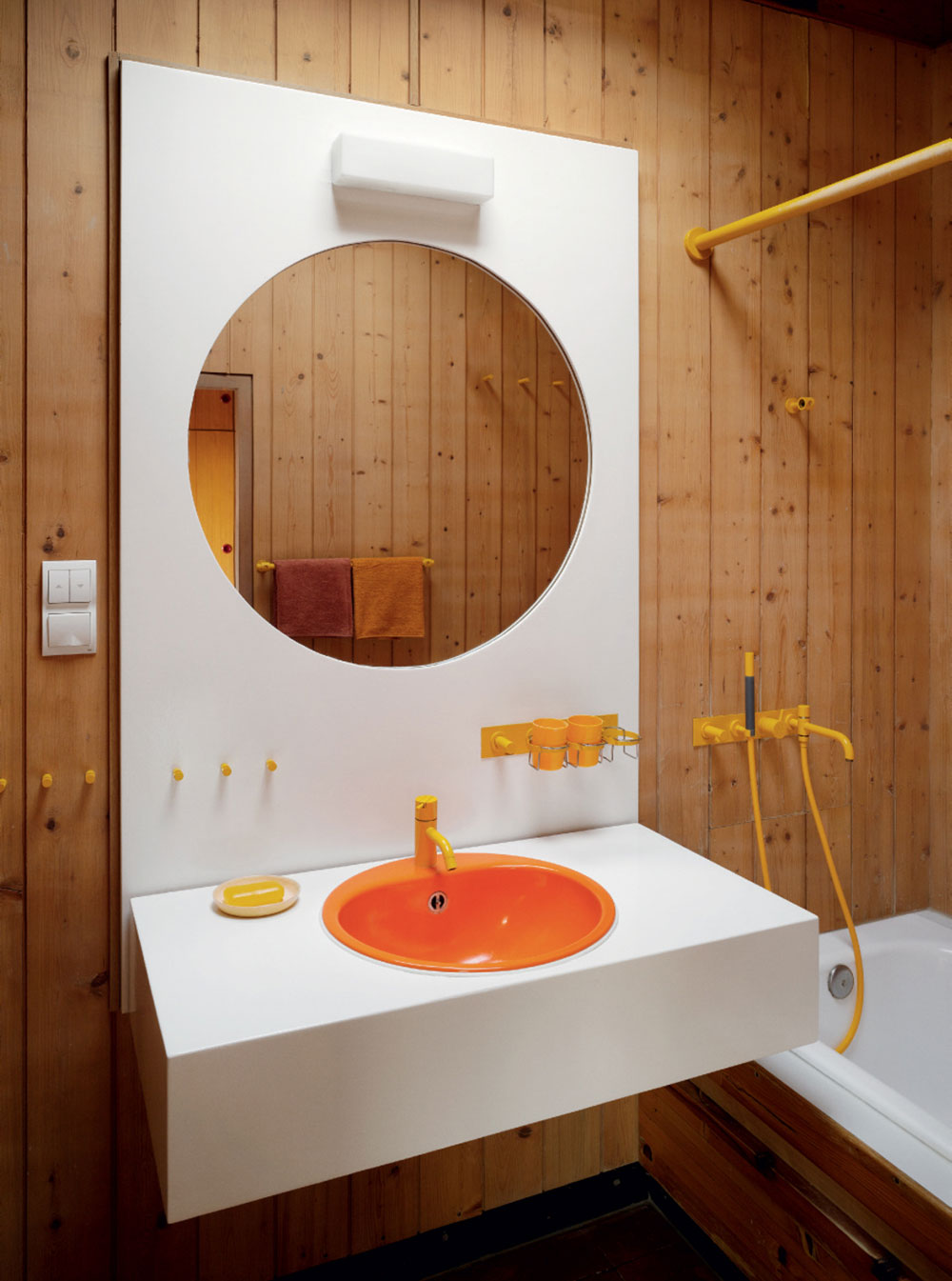
The pine-clad bathroom, designed by Tombazis, with replacement basin and taps by Vola.
And Tombazis’ influence stretches far beyond eco-centric architecture. He co-founded the Hellenic Institute of Architecture in 1995, the only independent body that promotes architecture in Greece and is an honorary fellow of The American Institute of Architects, as well as a regular contributor to international conferences. He was selected to design the Greek pavilion at Expo 2010 in Shanghai, and before that to build a church for 9,000 pilgrims at the Sanctuary of Fátima in Portugal, a prestigious commission completed in 2007 with local architect Paula Santos.
Religious buildings, he says, are among his favourite commissions. ‘Functionality in churches plays a role, of course, but much less so in other projects. One has to focus on the atmosphere.’ So what’s next? ‘I’d love to work on a big art museum,’ says Tombazis, himself a keen artist. With an impressive legacy and portfolio, including an important cultural commission, an archaeological museum in Vergina, northern Greece shortly to go on site, he may yet get his wish.
A version of this article originally featured in the September 2010 issue of Wallpaper* (W*138)
Receive our daily digest of inspiration, escapism and design stories from around the world direct to your inbox.
Ellie Stathaki is the Architecture & Environment Director at Wallpaper*. She trained as an architect at the Aristotle University of Thessaloniki in Greece and studied architectural history at the Bartlett in London. Now an established journalist, she has been a member of the Wallpaper* team since 2006, visiting buildings across the globe and interviewing leading architects such as Tadao Ando and Rem Koolhaas. Ellie has also taken part in judging panels, moderated events, curated shows and contributed in books, such as The Contemporary House (Thames & Hudson, 2018), Glenn Sestig Architecture Diary (2020) and House London (2022).
-
 At last: a London hotel that’s great for groups and extended stays
At last: a London hotel that’s great for groups and extended staysThe July London Victoria, a new aparthotel concept just steps away from one of the city's busiest rail stations, is perfect for weekends and long-term visits alike
-
 Three new smartwatches showcase new frontiers in affordable timepiece design
Three new smartwatches showcase new frontiers in affordable timepiece designLong may you run: smartwatches from Withit, Kospet and OnePlus favour function and value above all else, demonstrating just how much the smartwatch has evolved in recent years
-
 Debuts, dandies, Demi Moore: 25 fashion moments that defined 2025 in style
Debuts, dandies, Demi Moore: 25 fashion moments that defined 2025 in style2025 was a watershed year in fashion. As selected by the Wallpaper* style team, here are the 25 moments that defined the zeitgeist
-
 Tour an Athens penthouse – its designers’ own ‘house in the sky’
Tour an Athens penthouse – its designers’ own ‘house in the sky’This penthouse by Block722 is the architecture studio founders' own home and shows off impeccable detailing and dreamy, airy vibes
-
 Explore a refreshed Athens apartment full of quirk and midcentury character
Explore a refreshed Athens apartment full of quirk and midcentury characterA 1960s Athens apartment is revived by architects Aspassia Mitropapa and Christina Iliopoulou, who elegantly brought its midcentury appeal to the 21st century
-
 Honouring visionary landscape architect Kongjian Yu (1963-2025)
Honouring visionary landscape architect Kongjian Yu (1963-2025)Kongjian Yu, the renowned landscape architect and founder of Turenscape, has died; we honour the multi-award-winning creative’s life and work
-
 A beautifully crafted concrete family house in a Mexican suburb is a contemplative oasis
A beautifully crafted concrete family house in a Mexican suburb is a contemplative oasisHW Studio have shaped a private house from raw concrete, eschewing Brutalist forms in favour of soft light, enclosed spaces and delicate geometries
-
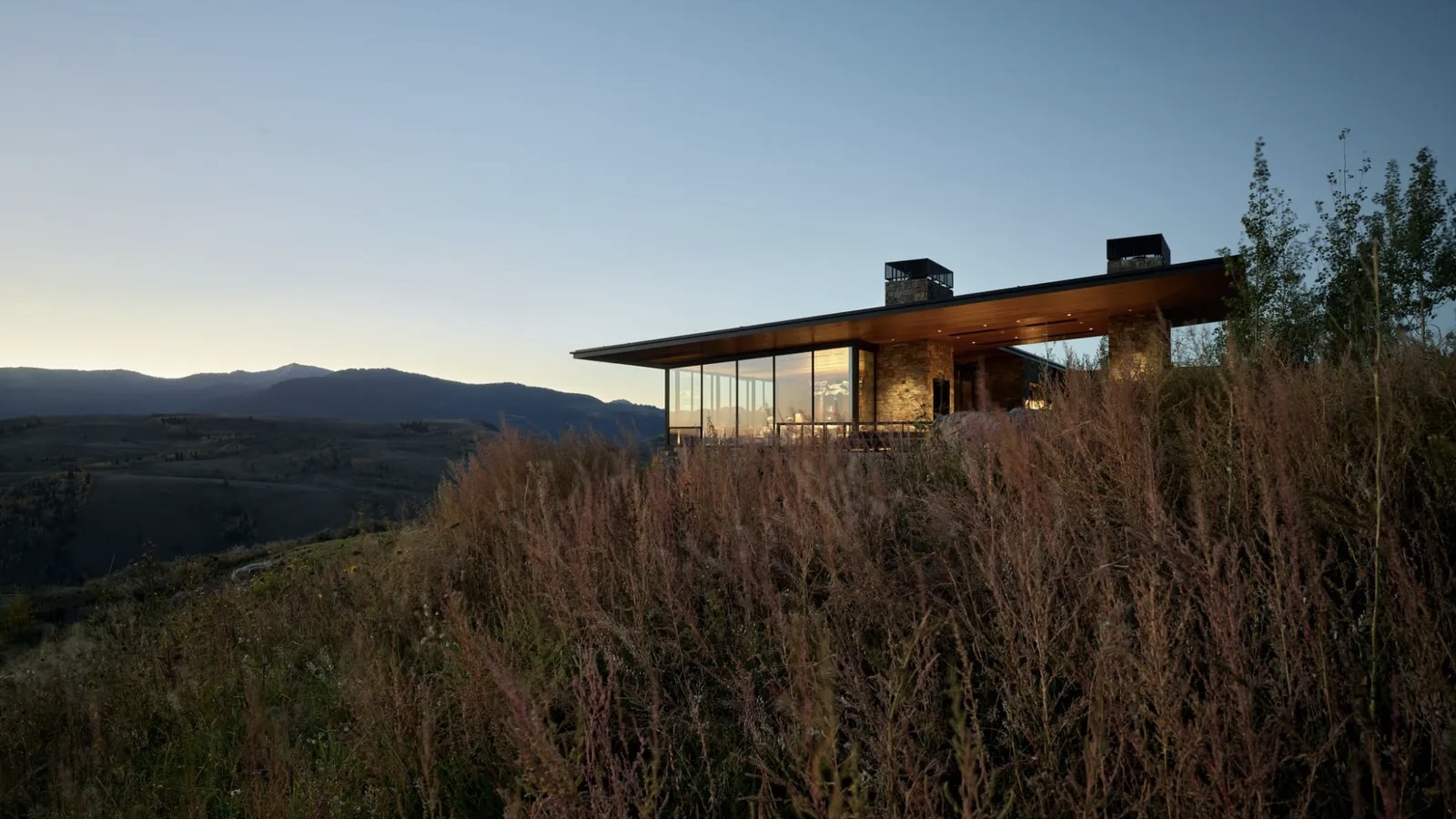 The Architecture Edit: Wallpaper’s favourite July houses
The Architecture Edit: Wallpaper’s favourite July housesFrom geometric Japanese cottages to restored modernist masterpieces, these are the best residential projects to have crossed the architecture desk this month
-
 A new Athens gallery is a celebration of old and new, a stone's throw from the Acropolis
A new Athens gallery is a celebration of old and new, a stone's throw from the AcropolisNew Athens gallery Melas Martinos by Local Local is a contemporary art space, a stone's throw from the Acropolis, in the Greek capital's Monastiraki neighbourhood
-
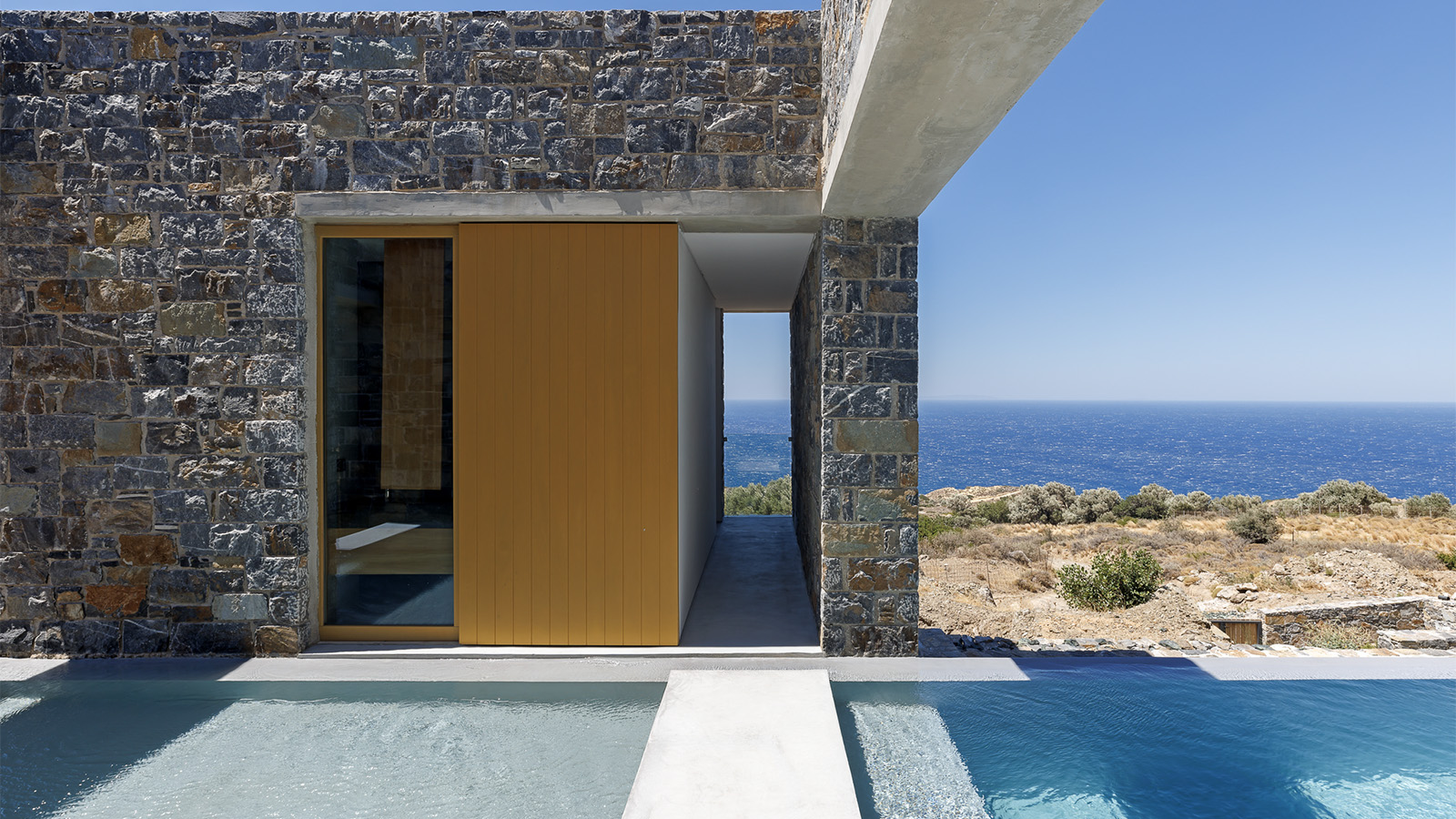 A clifftop Rethymno house tells a story, framing views as far as the Libyan Sea
A clifftop Rethymno house tells a story, framing views as far as the Libyan SeaThis house in the Rethymno region of Crete, designed by architects Gkotsis Serafimidou, is rich in local and natural materials – an oasis at which to disconnect
-
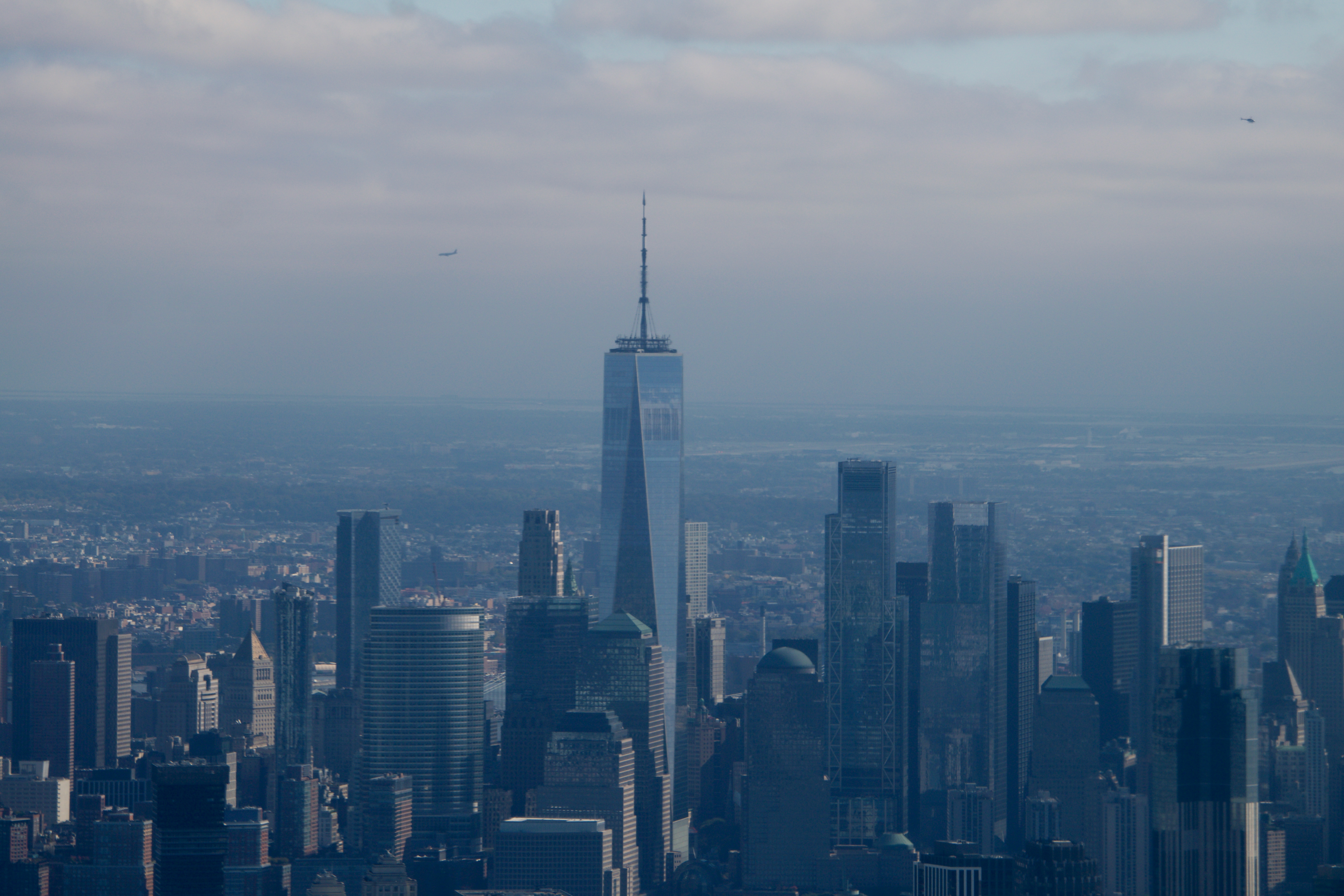 Remembering architect David M Childs (1941-2025) and his New York skyline legacy
Remembering architect David M Childs (1941-2025) and his New York skyline legacyDavid M Childs, a former chairman of architectural powerhouse SOM, has passed away. We celebrate his professional achievements